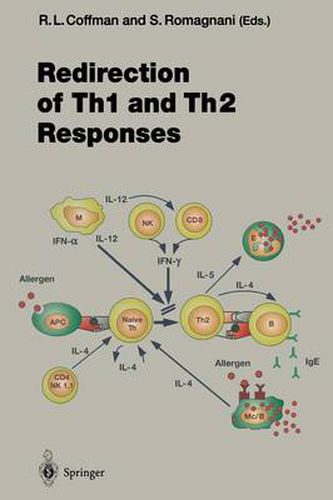Readings Newsletter
Become a Readings Member to make your shopping experience even easier.
Sign in or sign up for free!
You’re not far away from qualifying for FREE standard shipping within Australia
You’ve qualified for FREE standard shipping within Australia
The cart is loading…






This title is printed to order. This book may have been self-published. If so, we cannot guarantee the quality of the content. In the main most books will have gone through the editing process however some may not. We therefore suggest that you be aware of this before ordering this book. If in doubt check either the author or publisher’s details as we are unable to accept any returns unless they are faulty. Please contact us if you have any questions.
It has been 12 years since the first proposal was made to sub- divide mouse CD4 I T cell clones into Th I and Th2 subsets, based on their differences in cytokine production, and 7 years since the first clear demonstration of a similar dichotomy among human T cell clones. In the ensuing period, it has been realized that inappropriate development of Th I or Th2 responses are important features of many immunological and infectious dis- eases. Perhaps the first group of diseases to be understood in terms of preferential Th subset activation were allergic diseases (see PARRONC'HI et aI. , this volume). Several of the major, co- ordinately regulated, features of allergy, including IgE, eosino- philia and mastocytosis, were found to be stimulated by the T- specific cytokines I L-4 and IL-5 and inhibited by the Th I cyto- kine, IFN-. This suggested that the presence and severity of al- lergic responses reflected the relative numbers of Th I and Th2 cells specific for the offending allergen. Similarly, the very dif- ferent consequences of protective Th I and nonprotective Th2 responses to a number of intracellular pathogens have been re- cognized for some time (see TRINCHIERI and SCOTI, and COFF- MAN et aI. , this volume).
$9.00 standard shipping within Australia
FREE standard shipping within Australia for orders over $100.00
Express & International shipping calculated at checkout
This title is printed to order. This book may have been self-published. If so, we cannot guarantee the quality of the content. In the main most books will have gone through the editing process however some may not. We therefore suggest that you be aware of this before ordering this book. If in doubt check either the author or publisher’s details as we are unable to accept any returns unless they are faulty. Please contact us if you have any questions.
It has been 12 years since the first proposal was made to sub- divide mouse CD4 I T cell clones into Th I and Th2 subsets, based on their differences in cytokine production, and 7 years since the first clear demonstration of a similar dichotomy among human T cell clones. In the ensuing period, it has been realized that inappropriate development of Th I or Th2 responses are important features of many immunological and infectious dis- eases. Perhaps the first group of diseases to be understood in terms of preferential Th subset activation were allergic diseases (see PARRONC'HI et aI. , this volume). Several of the major, co- ordinately regulated, features of allergy, including IgE, eosino- philia and mastocytosis, were found to be stimulated by the T- specific cytokines I L-4 and IL-5 and inhibited by the Th I cyto- kine, IFN-. This suggested that the presence and severity of al- lergic responses reflected the relative numbers of Th I and Th2 cells specific for the offending allergen. Similarly, the very dif- ferent consequences of protective Th I and nonprotective Th2 responses to a number of intracellular pathogens have been re- cognized for some time (see TRINCHIERI and SCOTI, and COFF- MAN et aI. , this volume).